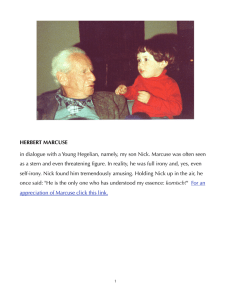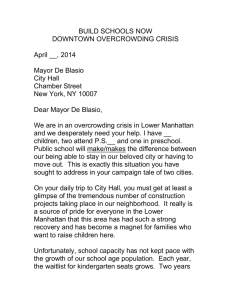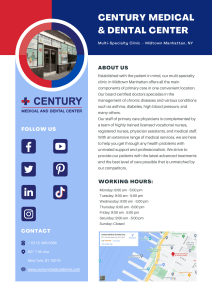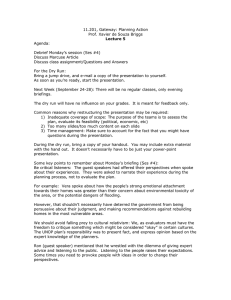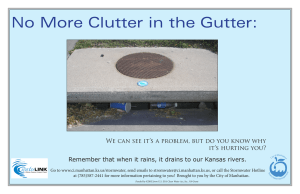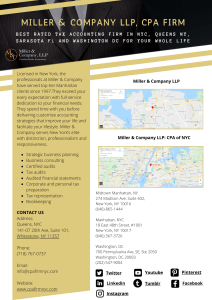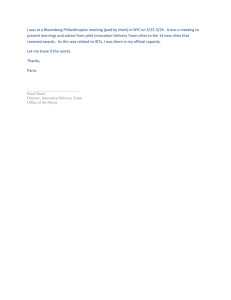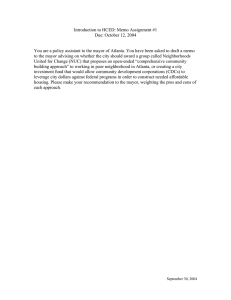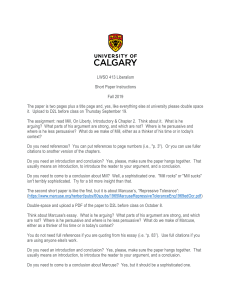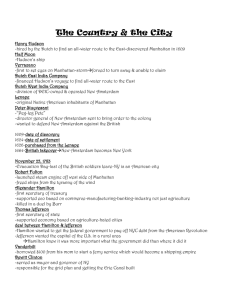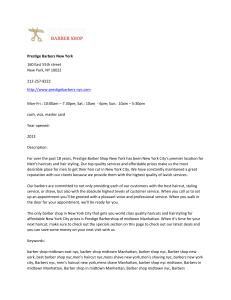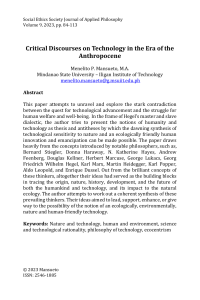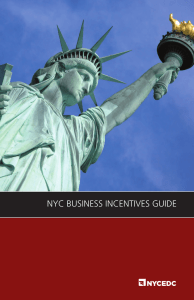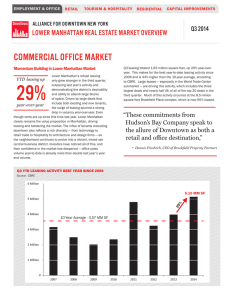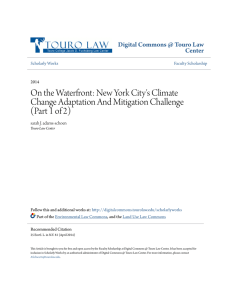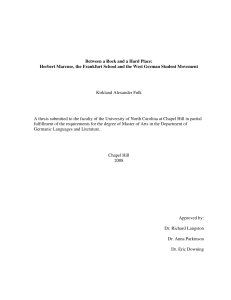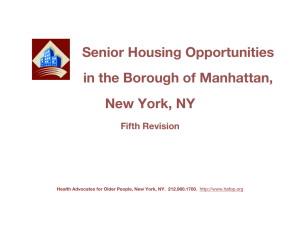PlaNYC is not a “Plan” and it is not for... By Peter Marcuse
advertisement
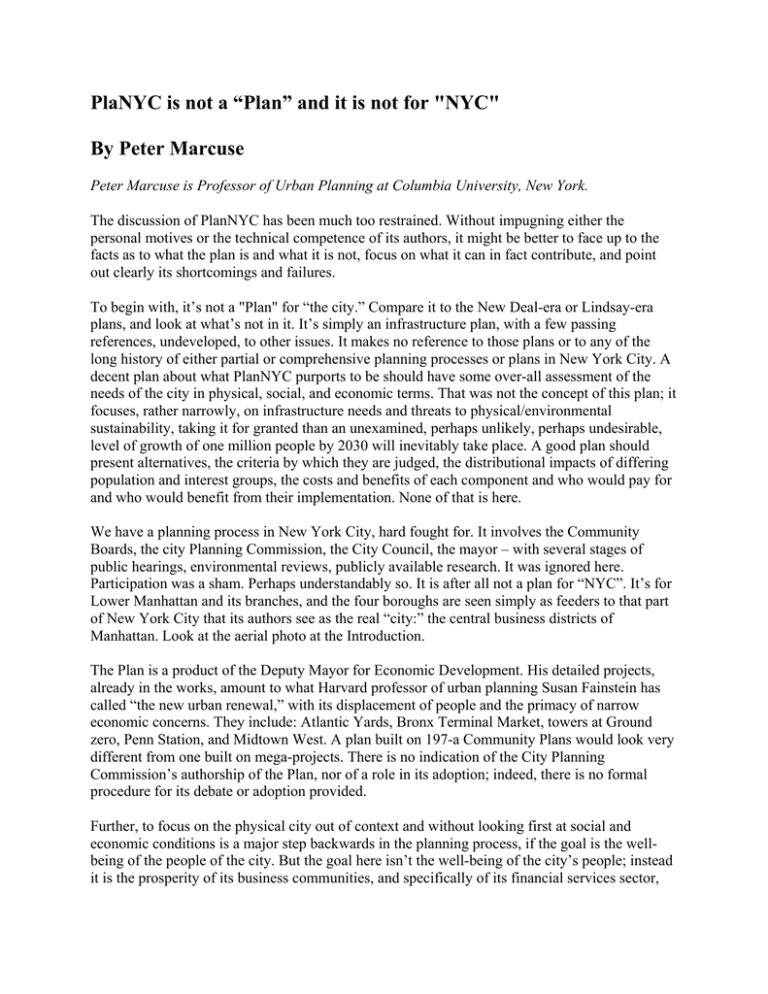
PlaNYC is not a “Plan” and it is not for "NYC" By Peter Marcuse Peter Marcuse is Professor of Urban Planning at Columbia University, New York. The discussion of PlanNYC has been much too restrained. Without impugning either the personal motives or the technical competence of its authors, it might be better to face up to the facts as to what the plan is and what it is not, focus on what it can in fact contribute, and point out clearly its shortcomings and failures. To begin with, it’s not a "Plan" for “the city.” Compare it to the New Deal-era or Lindsay-era plans, and look at what’s not in it. It’s simply an infrastructure plan, with a few passing references, undeveloped, to other issues. It makes no reference to those plans or to any of the long history of either partial or comprehensive planning processes or plans in New York City. A decent plan about what PlanNYC purports to be should have some over-all assessment of the needs of the city in physical, social, and economic terms. That was not the concept of this plan; it focuses, rather narrowly, on infrastructure needs and threats to physical/environmental sustainability, taking it for granted than an unexamined, perhaps unlikely, perhaps undesirable, level of growth of one million people by 2030 will inevitably take place. A good plan should present alternatives, the criteria by which they are judged, the distributional impacts of differing population and interest groups, the costs and benefits of each component and who would pay for and who would benefit from their implementation. None of that is here. We have a planning process in New York City, hard fought for. It involves the Community Boards, the city Planning Commission, the City Council, the mayor – with several stages of public hearings, environmental reviews, publicly available research. It was ignored here. Participation was a sham. Perhaps understandably so. It is after all not a plan for “NYC”. It’s for Lower Manhattan and its branches, and the four boroughs are seen simply as feeders to that part of New York City that its authors see as the real “city:” the central business districts of Manhattan. Look at the aerial photo at the Introduction. The Plan is a product of the Deputy Mayor for Economic Development. His detailed projects, already in the works, amount to what Harvard professor of urban planning Susan Fainstein has called “the new urban renewal,” with its displacement of people and the primacy of narrow economic concerns. They include: Atlantic Yards, Bronx Terminal Market, towers at Ground zero, Penn Station, and Midtown West. A plan built on 197-a Community Plans would look very different from one built on mega-projects. There is no indication of the City Planning Commission’s authorship of the Plan, nor of a role in its adoption; indeed, there is no formal procedure for its debate or adoption provided. Further, to focus on the physical city out of context and without looking first at social and economic conditions is a major step backwards in the planning process, if the goal is the wellbeing of the people of the city. But the goal here isn’t the well-being of the city’s people; instead it is the prosperity of its business communities, and specifically of its financial services sector, seen as the engine of the city’s growth. The goal of the “plan” is simply accommodating growth. For whose benefit? A search of the document for the words “equity,” “justice,” “social justice,” “polarization,” “inequality”, “minimum wages,” “land speculation,” “rent regulation,” “unemployment,” “living wage” would not turn up much. On housing, the Plan’s only solid commitment it to build 6000 units of housing on existing public parking lots and property. Every thing else is bribing the private sector to do what they don’t do and don’t want to do naturally. More than 50% of New Yorkers, close to two million households, pay over 30% of their incomes for housing, and this is widely acknowledged as too high. On parks, the idea of park/open space within 10 minutes walk of everywhere in New York City is absurd; suburban single-family type neighborhoods have the same needs as central Harlem or central Brooklyn? There are good elements in the Plan, such as the focus on environmental quality, the acceptance of bicycling as an important contribution to transportation, etc. They have been much advertised and should be built on. But to call PlanNYC a "Plan for New York City” degrades the concept of planning, which should serve the broad public interest, not a narrow band of interests. It gives planning a bad name. It ignores the City’s long-fought-for formal democratic and participatory requirements of good planning. It operates to conceal the lack of good comprehensive city-wide and equitable planning from which New York City suffers. Refraining from blunt and honest criticism makes top-down planning acceptable.
